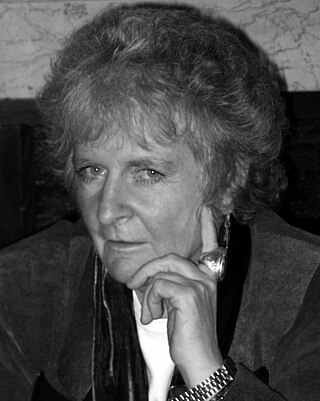
Ian Rank-Broadley FRBS is a British sculptor who has produced many acclaimed works, among which are several designs for British coinage and the memorial statue of Princess Diana at Kensington Palace, which was unveiled on her 60th birthday in 2021.

Sir Jacob Epstein was an American and British sculptor who helped pioneer modern sculpture. He was born in the United States, and moved to Europe in 1902, becoming a British subject in 1910.

Margaret J. Hambling is a British artist. Though principally a painter her best-known public works are the sculptures A Conversation with Oscar Wilde and A Sculpture for Mary Wollstonecraft in London, and the 4-metre-high steel Scallop on Aldeburgh beach. All three works have attracted controversy.
Glenna Maxey Goodacre was an American sculptor, best known for having designed the obverse of the Sacagawea dollar that entered circulation in the US in 2000, and the Vietnam Women's Memorial in Washington, D.C.

The Lincoln Monument of Wabash, Indiana or The Great Emancipator is a public sculpture by Charles Keck, a sculptor who was born in New York City. The cast bronze sculpture was commissioned by Wabash-native Alexander New and donated to the city of Wabash, Indiana, in 1932. It has remained on view at the northeast corner of the Wabash County Courthouse lawn ever since.

The fourth plinth is the northwest plinth in Trafalgar Square in central London. It was originally intended to hold an equestrian statue of William IV, but remained empty due to lack of funds. For over 150 years, its use was debated; in 1998, the Royal Society for the encouragement of Arts, Manufactures and Commerce (RSA) commissioned three contemporary sculptures to be displayed temporarily on the plinth. Shortly afterwards, Chris Smith, Secretary of State for Culture, Media and Sport, commissioned Sir John Mortimer to seek opinions from public art commissioners, critics and members of the public as to its future. Mortimer's final report recommended that there continue to be a rolling programme of commissioned temporary artworks rather than settle permanently on one figure or idea.
The Marsh Award for Excellence in Public Sculpture is an annual award for public sculpture in the UK or Ireland.

Danny Osborne is an artist born in Dorset, England in 1949. He is a resident of Iqaluit, Nunavut, Canada and Cork, Ireland. Osborne studied at Bournemouth & Poole College of Art. He is best known for his public sculptures, particularly his Oscar Wilde Memorial Sculpture in Merrion Square Park, located across from Ireland's National Gallery; listed by The Irish Times as one of the sites to see before you die along with an essay by Paula Murphy in the book Wilde: The Irishman and other notable public work including "First Breath" at Millennium Park in Kilrush, County Clare. In 1986, while living on the Beara peninsula in West Cork, Osborne and his series of porcelain figures were the subject of the documentary "Birds in Porcelain" by David Shaw-Smith.

The statue of William Slim, 1st Viscount Slim in Whitehall, London, is a work of 1988–1993 by the sculptor Ivor Roberts-Jones. It is one of three memorials to British military leaders of World War II on Raleigh Green, outside the Ministry of Defence's Main Building, the others being Oscar Nemon's 1980 statue of Lord Montgomery and Roberts-Jones's statue of Lord Alanbrooke, erected later in 1993. Slim's bronze statue stands approximately 3 metres (9.8 ft) high on a pedestal of Portland stone.

The Oscar Wilde Memorial Sculpture is a collection of three statues in Merrion Square in Dublin, Ireland, commemorating Irish poet and playwright Oscar Wilde. The sculptures were unveiled in 1997 and were designed and made by Danny Osborne.

A bronze statue of Mahatma Gandhi by Fredda Brilliant was unveiled in 1968 at the centre of Tavistock Square in London, to mark the impending centenary of Gandhi's birth in 1869. Mahatma Gandhi had studied law at University College London nearby from 1888 to 1891, before being called to the bar at the Inner Temple.

A Sculpture for Mary Wollstonecraft is a public sculpture commemorating the 18th-century feminist writer and advocate Mary Wollstonecraft in Newington Green, London. A work of the British artist Maggi Hambling, it was unveiled on 10 November 2020.

Scallop is a 2003 work by British artist Maggi Hambling. It is located on Aldeburgh beach, Suffolk, in an Area of Outstanding Natural Beauty and is a tribute to composer Benjamin Britten.













